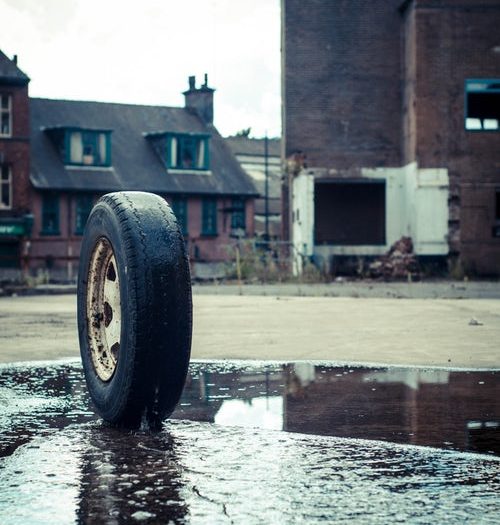FOR MANY DRIVERS, the need to change a wheel and tyre has simply never arisen, but a flat tyre can happen to anyone, and usually in the most inconvenient places and at the most inconvenient times.
It may appear innocuous, but the car jack is responsible for as many as 40 percent of all deaths caused by vehicle-related products, so its use needs respect.
The first thing to be aware of is that a car jack has been designed for the sole purpose of lifting a car high enough to permit a change of wheel. Using one for any other purposes is potentially fatal.
Car jacks are not designed to support a car while you work underneath it. They are also not designed to support vehicle components such as transmissions while they are being worked on.
If you need to crawl underneath a car while it is jacked up, always use a safety stand to support the car’s weight.
Most car jacks have been designed for a specific vehicle, with dedicated jacking and connection points. This can make them unsuitable for use with any other vehicle than the one they were designed for. Always refer to the owner’s manual to be sure you are using the jack correctly and safely.
Because flat tyres are such a rare occurrence for most of us, it is not unusual to discover, when you need it, that the jack is broken or rusted or, worst of all, missing altogether. It’s good practice to check your jack is in good workable condition, ideally at the same time as you check the tyre pressure of your spare (you do regularly check your spare tyre pressure, don’t you?)
Of particular concern are caravans and trailers, since they don’t usually come with a standard jack. This is especially so for older models, and quite often the average car jack simply isn’t suitable.
Newer models of caravan often have easily accessible brackets on the outside. Generic jacks such as the hydraulic Trail-A-Mate are able to create a secure connection to the caravan framework. They have the added bonus of making it unnecessary to crawl underneath the van. It’s a good idea to familiarise yourself with the operation of the jack before you leave home.
If you are unsure about the safety of your jack, or your ability to safely change a tyre, you can always call your motoring association (assuming you are a member) to come out and change it for you. This is especially recommended if you suffer a flat tyre on a dangerous roadside where traffic is passing close by at speed, or at night.
THE RIGHT WAY TO CHANGE A TYRE:
- As soon as you notice you have a flat tyre (from the steering pulling to one side, or the noise of the flat tyre flapping against the road) pull over in a safe place as far from passing traffic as possible. If possible, choose a location with a flat and solid surface.
- Once you have stopped, switch on your hazard lights to warn passing motorists that you are stationary and experiencing difficulties. Turn the car off, put it in park (if automatic) or into gear (if manual) and apply the parking brake.
- Remove the jack, spare wheel and tyre brace from the boot (some spare wheels will be found outside the car under the boot, or, with many utes, under the tray).
- Use the wheel brace to loosen the wheel nuts in an anti-clockwise direction, but do not remove them. Some cars have hubcaps or other wheel trims that cover the nuts, so you will need to remove these before you can loosen the wheel nuts. If the wheel nuts are difficult to loosen, try using your body weight rather than the strength of your arms. Short, sharp pressure on the wheel brace can often loosen stubborn wheel nuts.
- Establish the correct location to position the jack. This varies from vehicle to vehicle, so if you are not sure, refer to your owner’s manual. Once positioned, start raising the car off the ground by extending the jack. Make sure the jack is moving squarely upwards and not at an angle, in which case you’ll need to lower it and start again.
- Once the car is elevated, unscrew the nuts completely and place them somewhere safe and secure. You may need to raise the jack a little further to get the wheel clear of the ground. Remove the wheel and slide it halfway under the edge of the car, so if the jack should fail, the wheel will stop the car falling to the ground.
- Take the new wheel and tyre and line the holes up with the bolts. If you can’t get the wheel onto the bolts, you may have to raise the car a little further (a flat tyre isn’t as tall as a fully inflated one!) Carefully slide the wheel onto the bolts as far as it will go, then by hand screw the wheel nuts onto the bolts, alternating the bolts until all have nuts on them.
- Unwind the jack, and lower the car back onto the ground.
- Finally, use the wheel brace to tighten the wheel nuts, once again tightening them alternately until they are all tight.
- Load the flat tyre and wheel back into the boot (some cars, especially those with emergency spare wheels) have spare wheel wells that won’t be large enough to accommodate the wheel and tyre you’ve removed, so you may have to find somewhere to stow it. Replace the jack and wheel brace. If your spare is an emergency spare, don’t exceed 80km/h and have the flat tyre repaired or replaced as soon as possible.
Information contained in this article is for guidance only.
